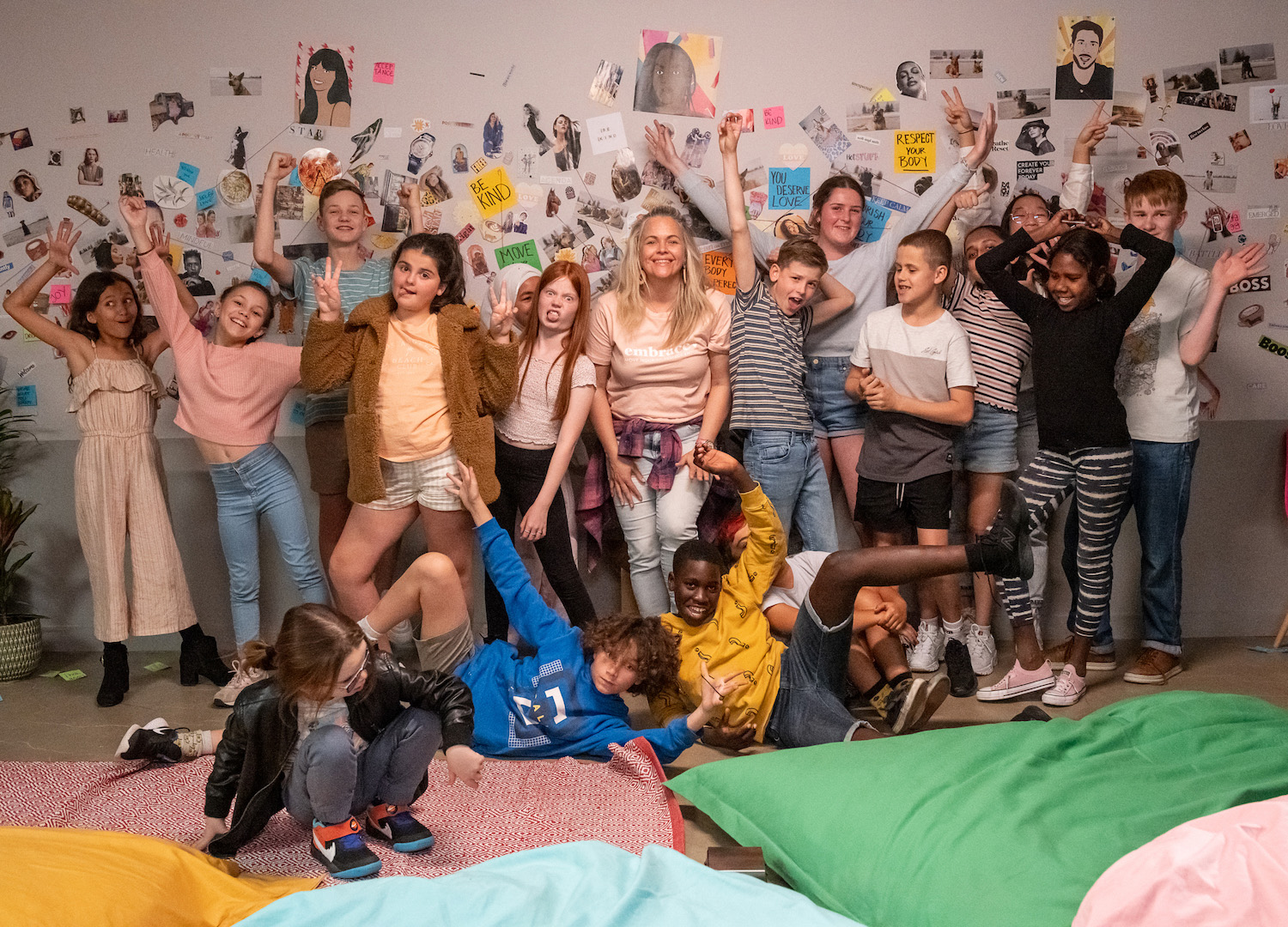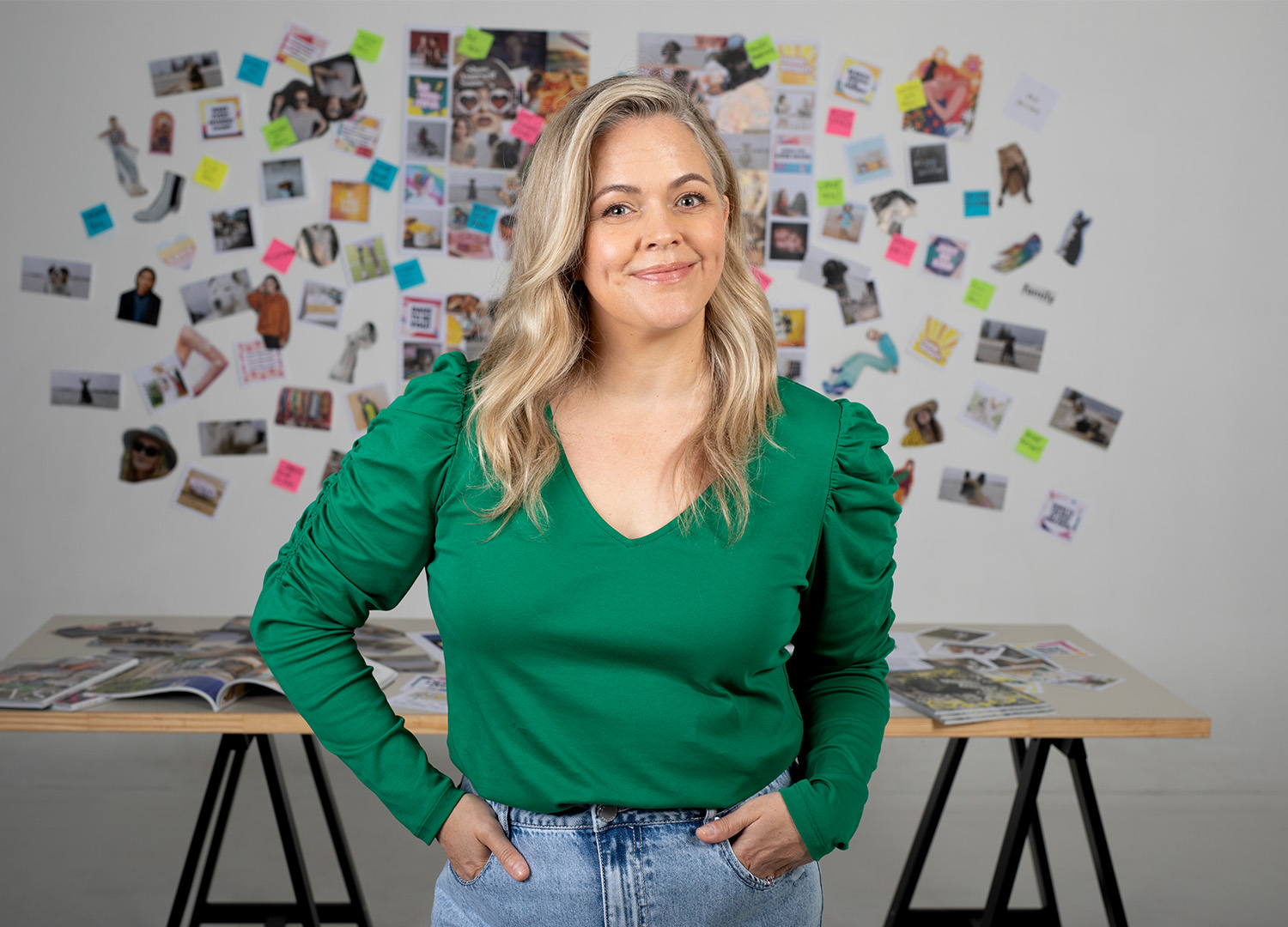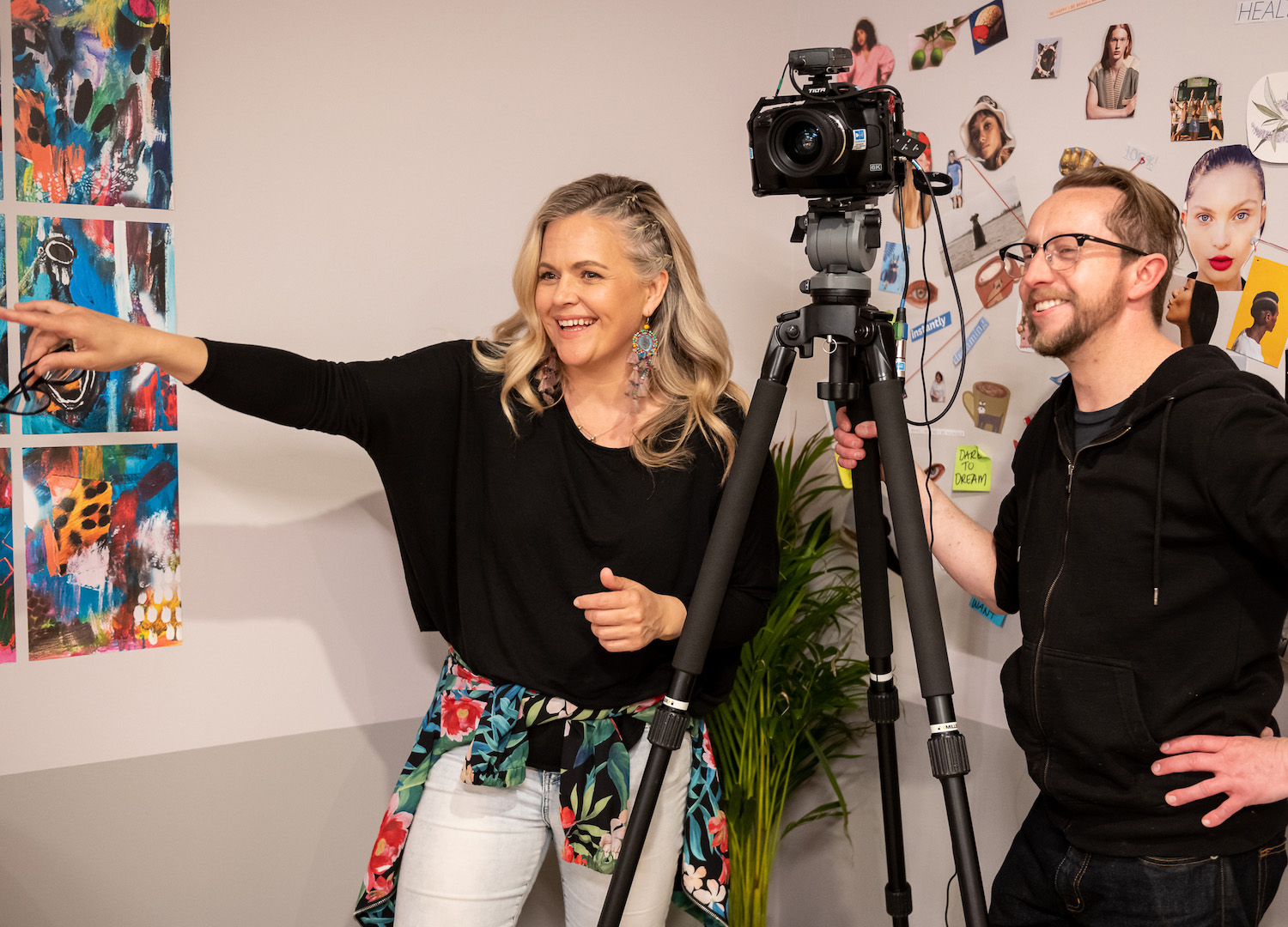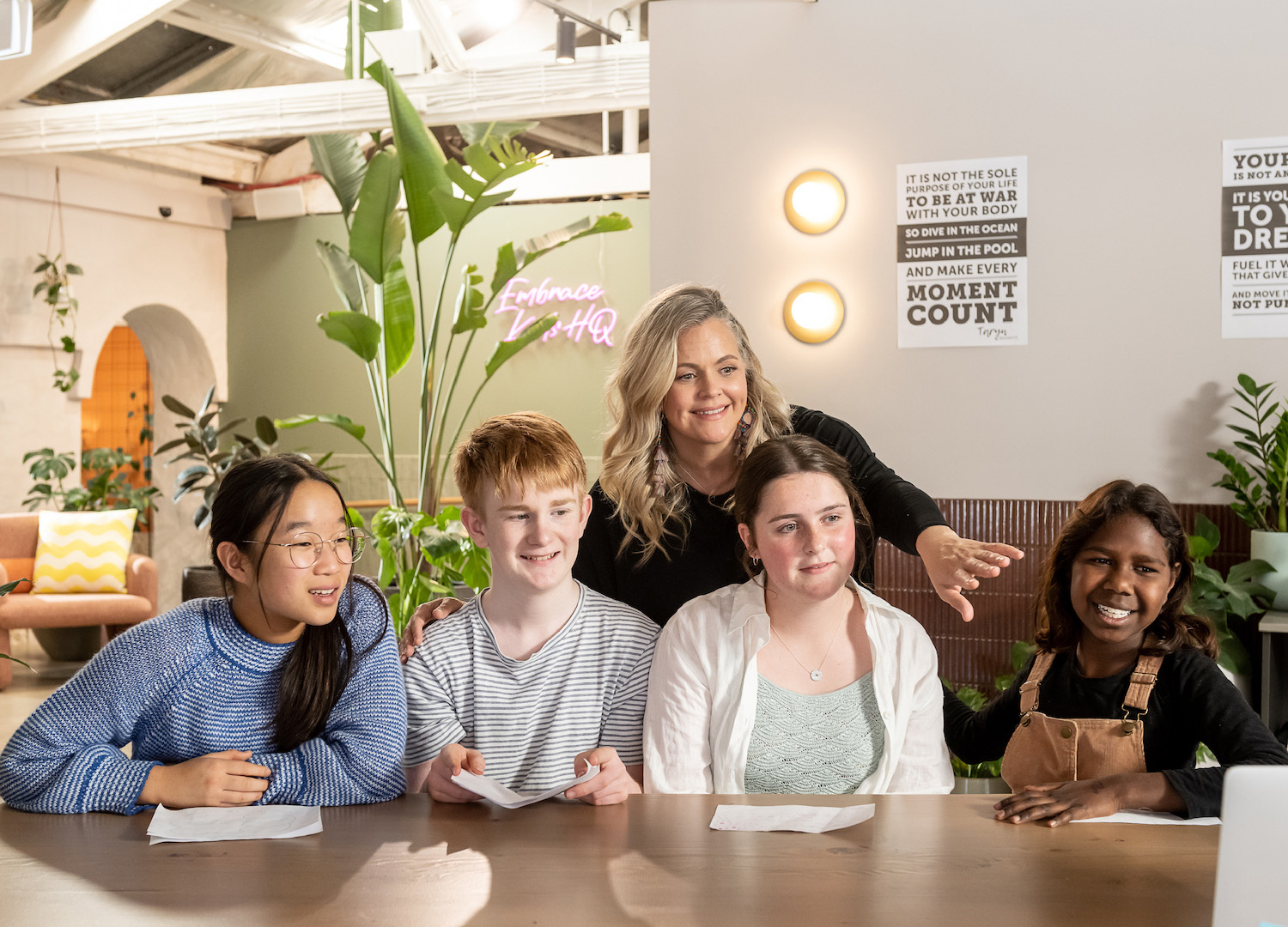
How to Embrace: The “Most Important Film Your Kids Will See This Year”
You might be familiar with Taryn Brumfitt. Since creating the groundbreaking body positivity documentary Embrace back in 2016, she’s been helping people everywhere disregard the negative messages we’re bombarded with to truly appreciate our bodies for everything they allow us to achieve. Because no one is born hating their body, now the founder of the Body Image Movement has turned her joyous lens to the next gen with the release of Embrace Kids.

Talk us through some of your proudest moments since releasing Embrace back in 2016 and what led you to Embrace Kids…
One of the coolest things that happened, and I say this so often in interviews, was in Germany when we released Embrace at the cinemas. We had 52,000 Germans on one night come see the film. We beat Guardians of the Galaxy and King Arthur on their opening nights! It was really extraordinary just to have this massive sort of success and groundswell of interest in, gosh, a foreign documentary over in Germany. But having Embrace seen by millions of people in over 190 countries, we’re very proud of that. And the other thing I would mention is Dr Zali Yager and Dr Ivanka Pritchard, from Victoria and Flinders universities, did a global study on the impact of Embrace that was published in a medical journal. Anecdotally, I knew that that film was changing people’s lives, but for us now to have the data that tells us it actually did is really cool.
The number one piece of feedback that I had from people was, ‘I wish I had seen this when I was younger.’
The reason Embrace Kids exists is because after all those people saw the first film, the number one piece of feedback that I had from people was, ‘I wish I had seen this when I was younger.’ I just felt that we were getting to people too late, we needed to get in nice and early so this film is for nine to 14-year-olds, but it’s definitely a film for families to go and see together. It’s not a Marvel film. It’s not the most obvious choice to go to the cinema to watch. But it is the most important film your kids will see this year. I’m really encouraging families to go together because I think it’ll open up a lot of conversations.
Do you think the world is finally getting it?
Ten years ago when I started this, I had to explain to people what body image was. Like… ‘Body image is how we feel about our body.’ We weren’t seeing as much diversity and representation as we are now either. There has been lots of change in the last 10 years but I think what I feel most excited about is the fact that I’ve never felt like the world is more motivated than we are now in terms of creating change. As adults, we have lived experience in how it feels to hate our bodies and we don’t want to pass that on to our kids. I think there are a lot of parents and a lot of adults who are saying, ‘No, I can’t put them through the trauma and all the years that I’ve spent hating my body. I don’t want it for them.’ That’s what I’m most excited about for this next film. We can all get on the same page now and get on with it.
Why do you think negative body image is so prevalent among young kids?
There are definitely multiple factors as to why kids are feeling the way that they’re feeling. Definitely, media and advertising have a big impact on how kids feel about their bodies. Lots of brands and organisations make us feel bad about who we are and what we look like so we buy their products. And there’s a whole lot of savvy marketing that goes to kids that tells them to be something different. Social media is one as well. Everyone’s really quick to blame social media straightaway but what we’re trying to do, and Jameela Jamil does a really good job in the film, is saying, let’s take back the power. She says, ‘Mute, block, delete, repeat.’ I think we just need to take responsibility for who we allow in our lives on social media. And we need to encourage our kids to seek out real, true role models for things that people are doing in the world, not just how they show up on Instagram or TikTok.

How have you experienced the shift from body positivity to body neutrality over the years?
Even when I started out, it was very much #LoveYourBody and that’s changed a lot. And thank goodness it has as well. The four main key messages of what we talk about in the film and the book is focusing on functionality as one of the main pillars: all the things your body can do, how your body feels, as opposed to what you look like. The other pillar is celebrating diversity, for all the reasons we know are so important. I think that’s why people are gonna get so much from this film – there’s so much representation up there on the big screen and people will be able to see themselves in one of the characters that we learn from. Self-compassion is the third pillar: being kind to yourself. And the fourth one is recognising real role models, which we talked about before. So yes to focusing on functionality as one of the pillars. They’re the four that we focus on in the film and the book.
I’ve never met anyone who’s learned to embrace their body and regretted the decision to do so. It’s not like you wake up one day and embrace, but you can, in any given moment, make the choice to embrace. It’s not linear, it’s up and it’s down, but it’s a beautiful path to be on.
What was it like working with the 18 incredible kids in the documentary?
These kids, gosh, it sounds very cliche, but truly, they made me want to be a better person in the world. They were just so articulate and so open in sharing their own stories. Very vulnerable. Very clever. They were just amazing. And the way they actually interacted with one another was really beautiful as well. There was a lot of support and a lot of genuine care and kindness, which I loved seeing. For me personally, I thought I would be the one teaching them and hopefully inspiring them but it was really the opposite. I was reminded about how much hope we have. I always talk about how we weren’t born into the world hating our bodies, it’s a learned behaviour. But talking to the kids, they were so much closer than the adults I’ve been working with to that purity of discovering the world before it tainted them. I love that sense of hope that it gave me that we were absolutely doing the right thing by getting in nice and early with this film. My hope is that I will put myself out of a job. That one day my grandkids will be like, ‘What do you mean people didn’t like their bodies?’ That’s my metric of success.
The other hope story here is, having done this work for so long now, I’ve never met anyone who’s learned to embrace their body and regretted the decision to do so. It’s not like you wake up one day and embrace, but you can, in any given moment, make the choice to embrace. It’s not linear, it’s up and it’s down, but it’s a beautiful path to be on. I think it’s time for grownups around the world to really take responsibility to help our kids because they do need our help. We need to be role models for them.

And what about the amazing Celeste Barber and Jameela Jamil…
Oh, they were awesome. Celeste Barber, Natasha Stott Despoja and Teresa Palmer were the three executive producers. These women are just… I mean, I have so much admiration for each of them in their professions. But for them to come on board on this film, as executive producers, has been incredibly helpful. Celeste is a joy to work with and to interview and you see that in the film. I love what Celeste does for social media. We never demonise [social media in the film] and say, ‘It’s bad, don’t you do it,’ because it can be a positive space if you make it. And I think that’s what I’d love kids to know is that you can use social media for good in the world. And you can use it to have a laugh. And that’s what Celeste does. And then Jameela Jamil’s role, I really wanted her involved because of her activism. Yes I wanted to subliminally educate kids through this film – without them knowing about it of course – and we wanted to entertain people, but also we needed everyone to take action. I always say we can laugh and make you cry and we can have a good time together, but if you walk out the doors and don’t do something, it’s just a complete waste of time. We’re not just here for the lols, we’ve got to do. So I love what Jameela brings. She’s so strong and formidable.
If you walk out the doors and don’t do something, it’s just a complete waste of time. We’re not just here for the lols, we’ve got to do.
How can we help the younger generation to grow up with a healthy body image (other than watching the new doco of course!)?
It’s role-modelling positive body image behaviour. That’s what we need to do to help our kids. We need to be mindful of the language that we use about our bodies and other people’s bodies. We must never talk about weight loss or weight gain in front of our kids, it’s irrelevant. We need to not talk about diets and scales. We need to show our kids how to move and nourish and respect and enjoy our bodies because then they will do the same. I don’t want anyone to ever think that embracing your body is about eating 20 doughnuts. It is about nourishing your body to get the most from it. We ask a lot of our bodies. And that’s what I’m always teaching my kids. Be not #Grateful, but find that real deep sense of gratitude, because your body does so much for you. We know from the science, this is evidence-based, that when kids have a higher body appreciation, they are more likely to eat healthier food and more likely to engage in physical exercise, and they’re less likely to smoke or take illicit drugs. So I think we’ve just got to be really mindful that when we talk about kids embracing their bodies, it’s good for their physical health and their mental wellbeing.

What kind of response have you had since filming?
Such a good response! Releasing Embrace Kids after Embrace, I have to say personally, was quite daunting. And given that it was kids, I just really wanted to get it right for them and use the film as a catalyst for change. I’m feeling really confident the more people I speak to and the screenings that we’ve had, because it’s been really positive. We started out with, here’s going to be a film on body image and we really took some deep dives on gender stereotyping, disability, inclusivity and representation. We covered a lot of subjects that we didn’t expect, but of course, we had to go there.
I just really wanted to get it right for them and use the film as a catalyst for change.
What are your goals for the future of The Body Image movement?
I’ve started the research and development for Embrace Men. That’s one that’s been percolating for quite some time so I’m really excited to finish off the trilogy of films for Embrace. That will be a big project and also the Embrace Hub. That’s the one place I’d love everyone to go because Dr Zali Yager and myself, a team of academics, health professionals, clinicians, researchers and teachers have been working on this one-stop shop of evidence-based resources that’s free. Free for kids, parents, school teachers, and sports coaches. We’re going to continue to build and grow that and take it out into the world. And also one of our big plans is to do state-based youth activations. So we can get youth together, show them the film, talk about some of the problems, come up with some of the solutions, and then send them back into their towns, whether it’s regional or in the cities, and activate their schools and their communities. We’ve got some pretty ambitious goals around our youth activations. And besides all of that, I’m going to get back on the speaking circuit. That’s what I love the most out of my job so I’m looking forward to more speaking.

